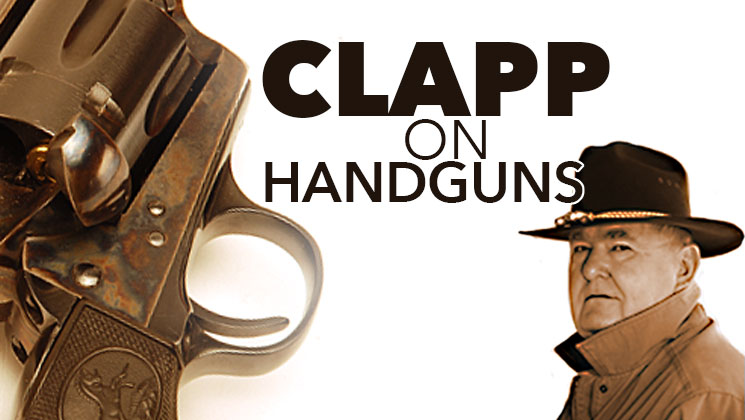
Smokeless powder is powder that burns with little or no smoke. And of course, stainless steel is steel that won’t stain. So a hammerless revolver must be one that has no hammer, right? Uh-uh, I afraid not. The term is often misused. The user of the term is trying to describe an internal hammer revolver or a spur-less hammer revolver. This type of gun has a long history in America, with some models dating to before the cartridge era. The advantages of such a firearm are considerable, but let’s look at the standard features. Usually, there is a humped or rounded upper rear corner on the receiver. Within the receiver, there is a pivoting hammer that includes or contacts a firing pin to fire a round. Since there is no way to get to the hammer from the outside, it cannot be cocked and is fired via long-arc DA trigger pull, or in more modern terminology, a DAO. There’s an advantage to a gun with a closed action that keeps debris out and even more of an advantage to a pocket gun with little in the way of latches, levers and what-not to snag on clothes and equipment. That’s why these internal hammer wheelguns have been on the scene almost from the earliest days. They are not new.
Since the introduction of Smith & Wesson’s Centennial revolver in 1952 and re-introduction in 1989, this was the single remaining “hammerless” made in America. Before World War II there were many makers of these things—American Revolver, Iver Johnson, Harrington & Richardson, Sedgely and a number of others. This was just in America—they were also made in Russia, France, Germany, Belgium, Spain and possibly other places. Admittedly, many of these were of lower quality. Usually, these guns were chambered for low-pressure cartridges not well suited for personal defense. For a long time, modern American handgunners have looked on dealer’s shelves and seen nothing but those reliable little S&Ws. Incorrectly, they identified the type as a S&W exclusive. That is not true, as many makers in many places have made similar guns and some were fine revolvers.
Don’t believe it? Let’s look at a couple of facts. At the present time, you can buy several kinds of S&W internal hammer guns, including one with a polymer receiver. Others come from Charter and Taurus, as well as a new little gem from Ruger. If you don’t believe the concept has been examined in detail, consider patent #306596, dated October 14, 1884. The included drawing shows a revolver with a familiar bird’s head butt shape. It also shows a very definite closed receiver and a spurless internal hammer. The patent was granted to Colt Firearms. Even the handgun giant was looking at the type, way back when.





































